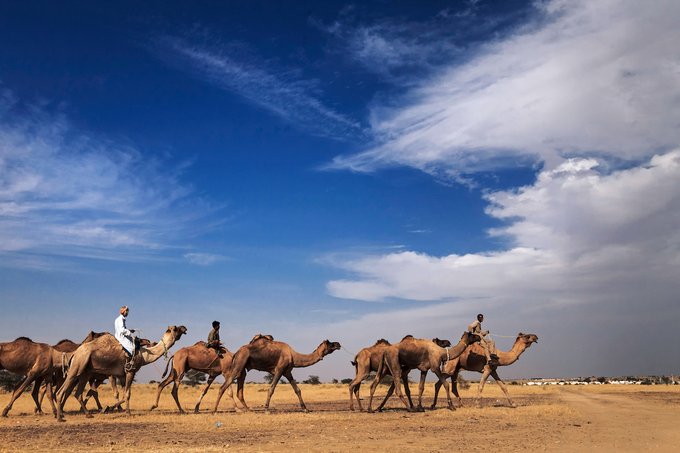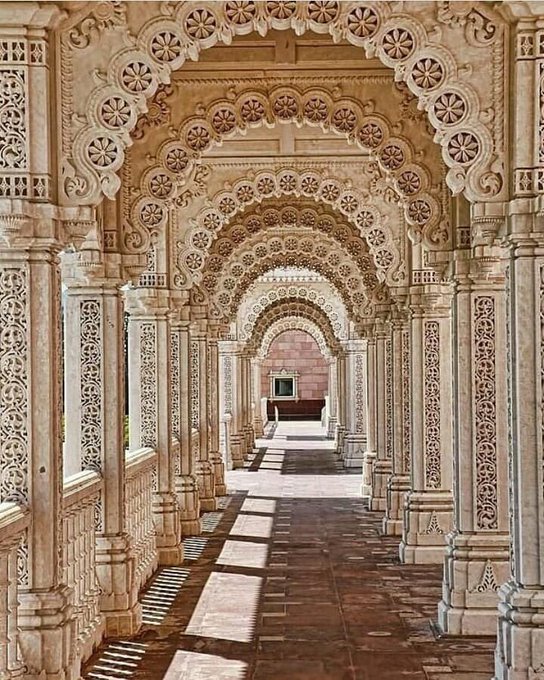
Vinit Wahi
Every old city has tales to impress, uniqueness to wonder and spirit to live. Some 900 kms from the India’s capital city, New Delhi, Jaisalmer in Rajasthan is no different which offers facts and interesting tales about the courageous rulers and citizens of the bygone era and tales of unequalled valor. Bordering Pakistan on its west the district of Jaisalmer in Thar Desert is also famous for the Longewala border which has now become A Must Visit tourist point. A shining example of the courage, bravery and valor of Indian soldiers, the Battle of Longewala created history on December 4, 1971 when about a hundred Indian defenders successfully halted the advancing troops of about 2000 Pakistani soldiers and 60 tanks.
Nicknamed The Golden City, Jaisalmer stands on the ridge of yellowish sandstone and is crowned by the ancient Jaisalmer Fort which contains a royal palace besides a string of ornate Jain temples. While the city has a population of about 80000, perhaps it is the only fort in the country where people still reside.
However, to have a feel of the desert, you need to undertake Desert Safari. And Sam Sand Dunes, about 45 km drive from the main city, is the ideal location to set off for the Desert Safari. You will love the safari on camelback that would take you along crests and troughs and you could watch the picturesque sunset on the desert. Jeep safaris are also available and equally thrilling. Desert festival is organized in the months of February and March. If you are around this time, you would not want to miss the folk dances, camel races and other cultural events conducted here. Once here, one can do desert camping, desert safari, paragliding and other adventure sports besides of course, camel rides and a visit to the nearby Desert National Park and Sanctuary.

A 20 km drive from the main city is abandoned ghost village of Kuldhara which was once prosperous and occupied by Paliwal Brahmins. The popular belief about it being a ghost village is that the then state minister Salim Singh wanted to marry the village chief’s daughter and therefore delivered an ultimatum to the village chief to accept his demands or let the whole community face dire consequences. Rather than giving in to the minister’s demands, the whole village decided to move away. Before leaving, they cursed this place to never have any kind of human settlement and this has been proven true to this date.
Some 120 kms away from Jaisalmer is the famous temple of Tanot Mata who is considered to be a reincarnation of Goddess Hinglaj. There are many stories of how during the 1965 India-Pakistan war, Tanot was under heavy shelling yet none of the bombs fired at the temple exploded. This reaffirmed people’s faith in the goddess. Post the war, the Border Security Force rebuilt the temple and is now managed by a BSF trust. And to celebrate the grit and steely resolve of our soldiers who stalled Pakistani forces from cutting deep into the Indian Territory, the Desert Corps at the Longewala have set up the Longewala War Memorial.
And finally, hold your breath, a drive to Longewala border, another 20 odd km from the Tanot temple, is an experience in itself. The breathtaking view of vast barren lands covered with timid sand dunes and smooth roads managed by Border Roads Organisation is quite a delight. The roller coaster ride of going up the steep inclines on the road and speeding down even steeper ones is a great fun. One can stand here for hours, either close to the international fence or atop a watchtower for visitors and have a bird’s eye view of the vast desert on either side of the fence.
The Desert Festival of Jaisalmer is eagerly awaited annual event of the state with camel races, turban-tying and Mr Desert competitions being organised and is held in February and showcases Rajasthani folk songs and dances, according to Mr Chhail Singh of Rajasthan Tourism Development Corporation’s Hotel Moomal, here. But the covid pandemic has cast its shadow here too in past over two years though tourism has picked up somewhat this time around, he added.
But while back in the main city, as a visitor one would be more interested in knowing about places of tourist attraction here. To begin with, one must go to the historic fort known as Golden Fort of Rajasthan which was built by King Jaisal, a Rajput ruler in 1156 A.D. It ranks amongst the largest forts in the world which stands tall and proud displaying the magic of Rajasthani architecture. The fort is a real sight with its 99 turrets during night.

Patwon-ki-Haveli, located in the main city, was built by a famous trader named Guman Chand and his sons. The entire construction is made of yellow sandstone. The grandeur and the architecture of the monument add immense value to the cultural heritage of the city. Out of the five havelis, one is converted into a museum. The third haveli houses the works of local craftsmen of the bygone era.
Gadisar Lake is about a 1.5 km drive away from the fort and was constructed by the first ruler of the land, Raja Rawal Jaisal and later reconstructed by Maharawal Garsi in the year 1367 AD. The people of the desert city depended on this tank for their water needs. You will find temples, holy shrines and Chattris around the banks of this lake.
Nathmal ki Haveli was built by two Muslim jeweler brothers who started working on the opposite sides of the building which led to a similar but non- identical left and right side. It is a beautiful amalgamation of Islamic and Rajputana architecture and hence is well justified as being one of the most beautiful haveli in the city.
Located inside the fort the Jain temples are a series of temples dedicated to Jain Tirthankaras and can be traced back to the 12th century. The temples are known for their distinctive architectural style modelled after the Dilwara temple of the state’s hill station Mt. Abu. Beautifully carved and well interconnected, these temples are a vision to behold and are completely made up of yellow sandstone.
However, among all the havelis, it is Salim Singh ki Haveli built by the then minister Salim Singh which is known for its distinctive and eye catching architecture. It has 38 balconies with their own distinctive style of architecture and a peacock shaped roof.
The Thar Heritage Museum is located at city’s main market and presents you the history, culture, art and architecture of the famous Thar Desert. It houses unique ornaments of the ship of desert and horses as also documents and coins of the area, ancient manuscripts and weapons. One can enjoy a puppet show here besides visiting the nearby Silk Route Art Gallery.
